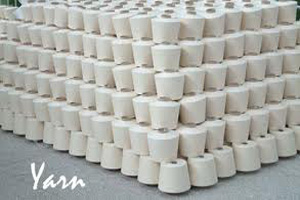
Indian cotton yarn export likely to meeting their targets
YarnsandFibers News Bureau 2014-06-20 15:00:00 – MumbaiThe Cotton Textiles Export Promotion Council, (Texprocil) based on its study conducted on cotton yarn, revealed that India's cotton yarns exports are meeting their targets barring the seasonal fluctuations generally witnessed every April and in spite of high raw cotton prices.
India has exported 1082 million kgs of cotton yarn worth US $ 3.75 billion during the 10 month period from April 2013 to January 2014. It is expected that the full year figure likely to be at 1350 mn kgs valued at US $ 4.70 billion.
As per TEXPROCIL statistics, India exported 1,082 mn kgs of cotton yarn valued at US$ 3.75 billion in the first 10 months (April – January) of fiscal year 2013-14. It is estimated that cotton yarn export for the full fiscal year 2013-14 would be around 1,350 mn kgs valued at US$ 4.70 billion. The high quality of Indian yarn is ensuring firm orders for Indian Mills from the international markets.
Exports of cotton yarn dropped during last three years in the month of April and it happened in 2014 too and one of the reasons is the temporary high cotton prices during this period. Last year as well as this year during the month of March and April Indian cotton prices have gone above the international prices for cotton upto 40s count. Current Indian prices are higher than international prices and good quantity imports of 1 1/8 inch cotton are taking place.
There is an increasing anxiety in the industry due to recent developments in Chinese cotton policy since China is the major importer of cotton and cotton yarn from India. Presently, the price difference between Indian & Chinese Cotton is quite high with the Indian yarn selling at much lower rates. In fact, prices of Indian cotton yarns after payment of duty and taxes in China are still very much lower than the Chinese domestic yarn prices.
Texprocil, Chairman, Mr Manikam Ramaswami, is of the view that even if the difference between Chinese cotton prices and international cotton prices narrows down substantially there will always be good exports of Indian yarns taking place if better quality is produced by Indian mills. However, export profitability will depend upon price parity with International cotton prices.
Market Intelligence
Ask for free sample Report

experience
Customer Base
dedicated team
Countries Served Worldwide









